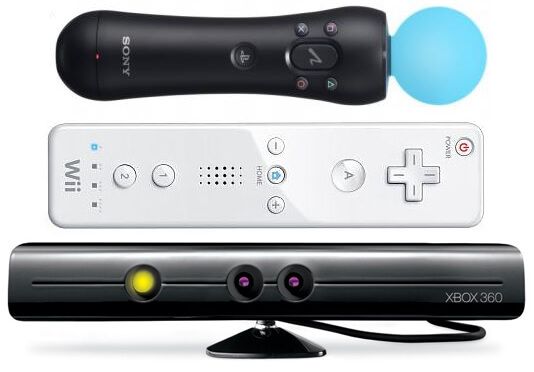At E3 2009, when Milo blew everyone's minds with its innovations in interactivity, we all thought this tech was going to change video games. There was so much promise demonstrated by the interaction a live person could have with a virtual boy, it had everyone talking. And then Kinect was officially introduced at Microsoft's E3 2010 press conference. Instead of improving on what we had already seen, the system took an unexpected step backwards into the realm of casual games. Instead of Fable 3, which will eventually support Kinect, we got Kinectimals.
Kinect could have stepped forward as the motion controller of choice for the hardcore gamer, for the gamer who feels that what the Wii has to offer is too casual, and is too focused on group play. But that isn't happening. At least, not yet. Neither Kinect, nor its spiritual brother in motion, PlayStation Move, should be attempting to repeat the Wii formula. They should instead be developing their own niche in order to appeal to those gamers who feel left in the cold by motion based gaming.
As a gamer who is willing to try any and all types of games, I can say that I look forward to Kinect and Move. They both possess inherent strengths that have the potential to set them apart from anything the Wii has to offer. Move is a more precise version of the Wii Remote, while Kinect is a totally different, body-motion fueled animal (or if you prefer, Kinectimal). What each can offer is a unique experience on a console much more powerful than the Wii.
Kinect is still the most unique of the motion sensing peripherals out there. Games like Dance Central are taking the tech and making good use of it. Unfortunately, it isn't about whether the Kinect tech or the Move tech works. They both do. It's about what types of games developers are choosing to create using said tech.
Take, for instance, mature games. Gamers struggle to find them on the Wii. Surely, Move and Kinect would be able to fill that void. Yet, out of the gate, the mature options are extremely slim for both systems. We will be told time and time again that those mature options are on the way, but are they? And is creating mature content for the fledgling motion control systems worth the risk?
After the tremendous success that Nintendo has enjoyed with casual games, it must be hard for any developer/studio/publisher to endorse any game that doesn't possess a grander appeal. Taking a leap of faith that an audience for mature rated, motion based gaming exists is something both Sony and Microsoft will struggle with, just like Nintendo did. And unfortunately, for the most part, gambling on M rated Wii games didn't pay off. Casual games moved units at a much greater rate than hardcore games. I'm surprised a game like Metroid: Other M was even released.
Don't get me wrong. I own a Wii and I love it. When a game comes along that works on the Wii, it simply sings. Unfortunately these games are few and far between, in part because of the trend towards making Wii games that are highly approachable and group oriented.
Sure, motion controls aren't meant to eliminate the idea of a single player experience, but that is what is occurring as we speak. As more and more copies of Wii Play or Wii Sports Resort fly off the shelves, games like No More Heroes and MadWorld -- games that make use of motion controls to enhance the experience and the story -- are being left behind.
Since Nintendo is looking less and less likely to be the company that takes away the "casual" stigma of motion controlled games, the task falls to Microsoft and Sony. If they can get gamers interested in their motion control options, they can then take the risks Nintendo is afraid to take. But first they have to sell you on the peripherals.
Nobody can say for sure that we will see developers of more hardcore games deciding to support for Move or Kinect, even if those peripherals sell well. But we can hope. Unfortunately, it almost seems like some current games are being forced to include Move support just to sell a couple extra units. Adding motion controls mid-development cycle is like post conversion 3D. If it wasn't planned from the beginning, don’t include it. The public has become too well informed for things like this to slip by.
What I’m getting at is this: neither Move nor Kinect are going to be able to take any drastic steps until they get their core fanbases established. But since they are trying to appeal to an audience that has already embraced the Wii, Sony and Microsoft are fighting an uphill battle. Making a hardcore game that utilizes a “casual” peripheral is too big a financial risk in this economy, and therefore the safer bet -- in this case, the casual game -- is always the best bet. So make your move (no pun intended) Sony and Microsoft, but know that we’re watching.
What are your thoughts on Move and Kinect, Ranters? Which is the bigger draw in your mind? Feel free to let it all out in the comments section below.
PlayStation Move releases September 17, 2010.
Microsoft's Kinect releases Novenber 4, 2010.
If you enjoyed what you read follow us on twitter @GameRant and the author @AnthonyTaormina.



